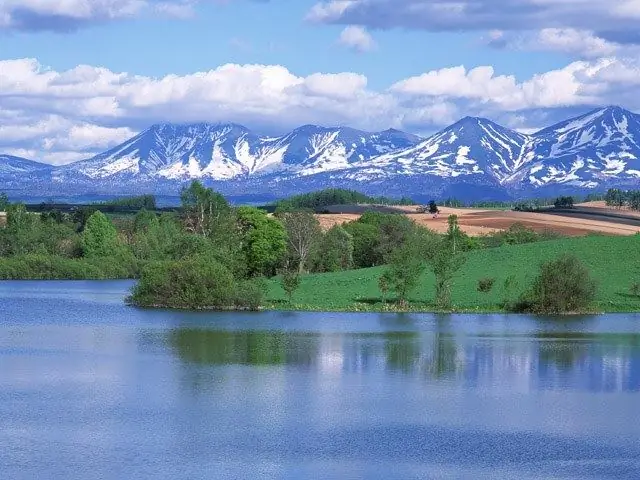The work on the landscape is individual in each case. After all, if you draw nature from life, a lot depends on the characteristics of the lighting, weather conditions and the characteristics of the selected area. However, in order to understand the general principles of painting a landscape with paints, you can analyze one example, and subsequently supplement this basic knowledge with the experience gained.

It is necessary
- - paper;
- - pencil;
- - eraser;
- - brushes;
- - paints;
- - palette.
Instructions
Step 1
Think about how best to position the sheet of paper or canvas. It depends on the artist's task in each specific case: if you want to convey the scale of the landscape, the breadth of the steppe, for example, it is better to choose a horizontal arrangement. For a more detailed drawing, vertical is suitable. In any case, immediately mentally outline the boundaries of the landscape that you want to draw, and transfer them to the sheet with a few lines. So you will see how well all the elements of the picture are arranged in the selected format.
Step 2
Refine your sketch. Determine the proportional ratio of all items. For example, when drawing a landscape, as in the illustration, you first need to draw a line separating the foothills of the mountains and the flat area below. Moreover, this line should be slightly higher than the central horizontal axis of the sheet. Then you need to create the outlines of smaller objects - outline the land ledge, draw mountain ranges and tree crowns.
Step 3
Further work with the sketch depends on what colors you plan to paint nature with. If you chose watercolor, you need to loosen the pencil sketch with an eraser, otherwise the lines will be visible under the layer of paint. This is also necessary if you paint with diluted acrylic or tempera. If you work with gouache, thick acrylic and oil, the sketch can be left alone, it will hide under a thick layer of color.
Step 4
Determine which parts of the landscape will be painted in the lightest shades. It will be easier for you to paint over the drawing, moving from lighter colors to dark ones, gradually increasing the color saturation. If you are painting with translucent paint, such as watercolor, the white of the paper should show through in the lightest areas of the drawing - this will make the color appear cleaner. In a landscape with mountains, it will be snow-covered mountains, clouds and the reflection of mountains in the water.
Step 5
When applying paint, try to convey the texture of the surface you are painting. For example, the reflection in water looks blurry, so paint the water with quick wide fills and add small strokes of ripples after the paint dries. The contours of the mountains are clearer, but since they are in the distance, they seem to be hidden behind a haze. But in the middle ground, you can see the small details of the landscape. Here it is worth painting tree crowns with small strokes that will resemble leaves.
Step 6
After applying the main color spots, carefully paint all the shadows. Without them, the drawing will not look realistic. Pay attention to the direction of the shadow and its shade - it depends on the color of the object that the shadow casts, as well as on the color of the surface on which the shadow lies.
Step 7
During the plein air, you do not need to complete the drawing. You can define the color scheme and designate the shape and size of the shadows, and finalize the sketch at home.






